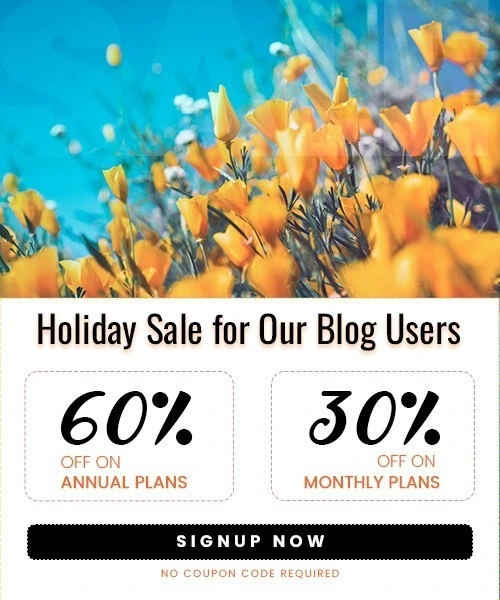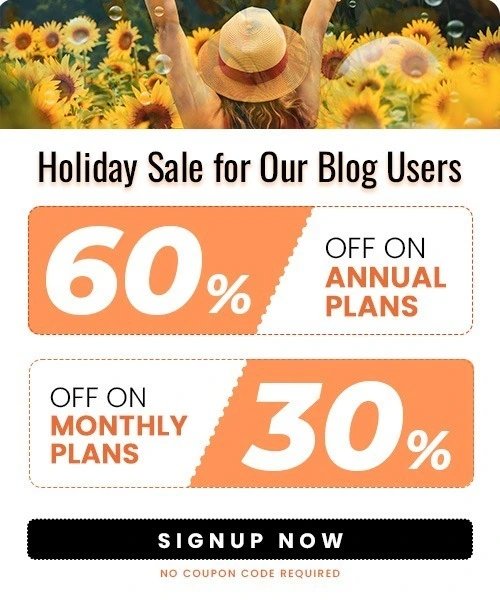Etsy Visits vs Views: What’s the Difference and Why It Matters
Last Updated on October 23, 2025 by Himanshu Rawat
If you’re an Etsy seller trying to grow your shop, you’ve probably spent time analyzing your shop’s stats. One of the most confusing parts for new (and even experienced) sellers is understanding the difference between visits and views. At first glance, they sound similar, but they track very different things.
In this blog post, we’ll break down the difference between Etsy visits and views, why it matters, and how to use this information to improve your Etsy shop performance.
What Are Etsy Views?
Etsy views represent the total number of times your listings or shop profile pages have been seen. Every click on a product listing counts as one view, so a single visitor can generate multiple views if they explore several listings in one session.
For example, if a shopper finds a digital planner in your shop and clicks on it, that counts as 1 view. If the same shopper then looks at four more planners in your shop during that visit, that results in 5 total views from one visitor.
Views are a measure of engagement. The more views your listings get, the more attention they’re attracting. However, views alone don’t tell you how many unique shoppers visited your shop, or whether those views are coming from repeat visits by the same person.
Key Point: Views count how many times your individual listings are seen regardless of who is looking or how often.
What Are Etsy Visits?
Etsy visits, on the other hand, count how many individual shoppers have come to your shop or listings. This metric counts unique visitors, meaning each person is counted only once, regardless of how many listings they view or how long they stay.
Using the previous example, if a shopper viewed 5 different listings in your shop, that’s 5 views but just 1 visit because it’s a single shopper’s browsing session. Visits indicate the total number of unique people exploring your shop, providing insight into your shop traffic and growth potential.
Key Point: Visits track people (or rather, browsing sessions), not product pages.
How to Access Your Etsy Views and Visits
To access your Etsy shop’s views and visits, you can use Etsy’s built-in analytics tools found within your shop’s dashboard. These tools provide detailed insights into how many visitors and views your shop and listings are receiving, helping you understand buyer behavior and optimize your store.
Etsy offers a dedicated “Shop Stats” section where shop owners can view detailed metrics:
- Login to your Etsy account and go to your shop management page.

- Click on “Shop Manager” in the top menu.
- Select “Stats” from the sidebar menu.
In the “Stats” section, you’ll find data including:
- Visits: the number of unique visitors who land on your shop or listings within a specific period.
- Views: the total number of times your shop or individual listings have been viewed, including repeat views by the same visitor.
Tip: Compare visits to views to gauge engagement, and use the insights to optimize product descriptions and internal links to boost browsing and sales.
Why Understanding Views and Visits Matters?
Knowing the difference between views and visits is essential for understanding how shoppers interact with your Etsy shop. While they may sound similar, they tell you very different things:

- Visits represent the number of unique people who come to your shop. This shows your reach and how many potential customers you’re attracting.
- Views, on the other hand, reflect how many individual listing pages those visitors are clicking on. This measures engagement and how interested they are in what you’re offering.
A strong views-to-visits ratio means that not only are people finding your shop, but they’re also exploring it. Here’s a simple breakdown of what that ratio can reveal:
- 1:1 ratio – Visitors are only looking at one product before leaving; engagement may be low.
- 2–3 views per visit – Moderate engagement; shoppers are browsing and curious.
- 4+ views per visit – High engagement; your listings, branding, or shop layout are keeping them interested.
For example, if your shop has 160 views from 40 visitors, that’s 4 views per visit showing strong engagement. But if you have 120 views from 100 visitors, more people are stopping by, yet few are exploring your listings.
Interpreting Etsy Stats for Better Sales
- If you have high views but low visits, it may suggest your listings attract attention but shoppers aren’t motivated to explore your shop further. This could point to issues like product titles not matching shopper intent, unpolished photos, or descriptions that don’t inspire curiosity.
- If visits are rising but views per visit are low, focusing on improving product photos, SEO keywords, and cross-selling between listings can help boost engagement and encourage shoppers to browse more items.
- Ultimately, rising visits along with strong views and conversions indicate your SEO, marketing, and listings are aligned for growth.
Tips to Increase Both Views and Visits
1. Use Strong SEO
Use relevant SEO keywords in your titles, tags, and attributes that match buyer searches. Focus on long-tail keywords and place your primary keyword early in the title. Use all 13 tags with varied, related phrases to maximize search visibility.
2. Improve Your Listing Photos
Upload clear, bright product photos showing multiple angles and lifestyle shots. Your primary photo should be eye-catching to increase clicks and encourage shoppers to visit your listing and shop.
3. Promote with Etsy Ads
Etsy Ads help boost your listings directly in Etsy search and across the platform. You can set a daily budget, choose which listings to promote, and track performance in your Shop Manager. Ads are a powerful tool to increase both visibility and visits, especially for new or seasonal items.
4. Promote Outside Etsy
Use social media platforms like Instagram and Pinterest, along with email newsletters, to attract new visitors. These external sources bring fresh, unique traffic that increases your overall shop visits. Use Outfy, a tool that automates social media promotion, helping you efficiently share your products across multiple platforms to boost exposure.
5. Offer Related Products
Suggest complementary items or bundles within your listings to encourage shoppers to browse multiple products. This increases views per visit and boosts sales opportunities.
6. Update Your Shop Regularly
Add new listings or refresh existing ones often. Etsy favors active shops, which can improve your search ranking and draw more views and visits over time.
Conclusion
Understanding Etsy visits vs views equips you with a clearer view of how shoppers interact with your shop. Visits reflect the number of unique potential customers drawn to your store, while views highlight how engaged those visitors are with your products.
By monitoring and optimizing both, you can make data-driven decisions to increase traffic, improve listing quality, and ultimately boost your Etsy shop sales.
Frequently Asked Questions
1. What exactly is the difference between Etsy visits and views?
Etsy visits count the number of unique browsing sessions in your shop, meaning each time a shopper comes to your shop regardless of how many listings they look at. Views, on the other hand, count the total number of times your individual listings are seen, including multiple views by the same visitor.
2. Can one person generate multiple views but only one visit?
Yes! If a shopper browses several different listings in your shop during one session, it counts as one visit but multiple views—one view for each listing they check out.
3. Why do my Etsy views seem much higher than my visits?
This happens because views track every time a listing is loaded, so if visitors explore multiple products, views accumulate quickly. Visits only count unique sessions, so the number is usually lower than views.
4. How can understanding visits and views help me improve my Etsy shop’s performance?
By analyzing visits and views, you can understand shopper behavior better. For example, if visits are high but views are low, it might mean people are entering your shop but not exploring your products, signaling a need to improve your shop’s layout or listings.
5. Should I focus more on increasing visits or views to boost my sales?
Both are important. Increasing visits brings more potential customers to your shop, while encouraging more views per visit shows shoppers are interested and browsing your products. Ideally, you want to grow both to maximize sales opportunities.
6. What does my views-to-visits ratio mean?
Your views-to-visits ratio shows how much people explore your shop:
- 1:1 – Low engagement. Visitors view one item and leave.
- 2–3 views/visit – Moderate interest. They’re browsing a bit.
- 4+ views/visit – High engagement. Shoppers are exploring and interested.
A higher ratio means your shop is capturing attention keep it up!



